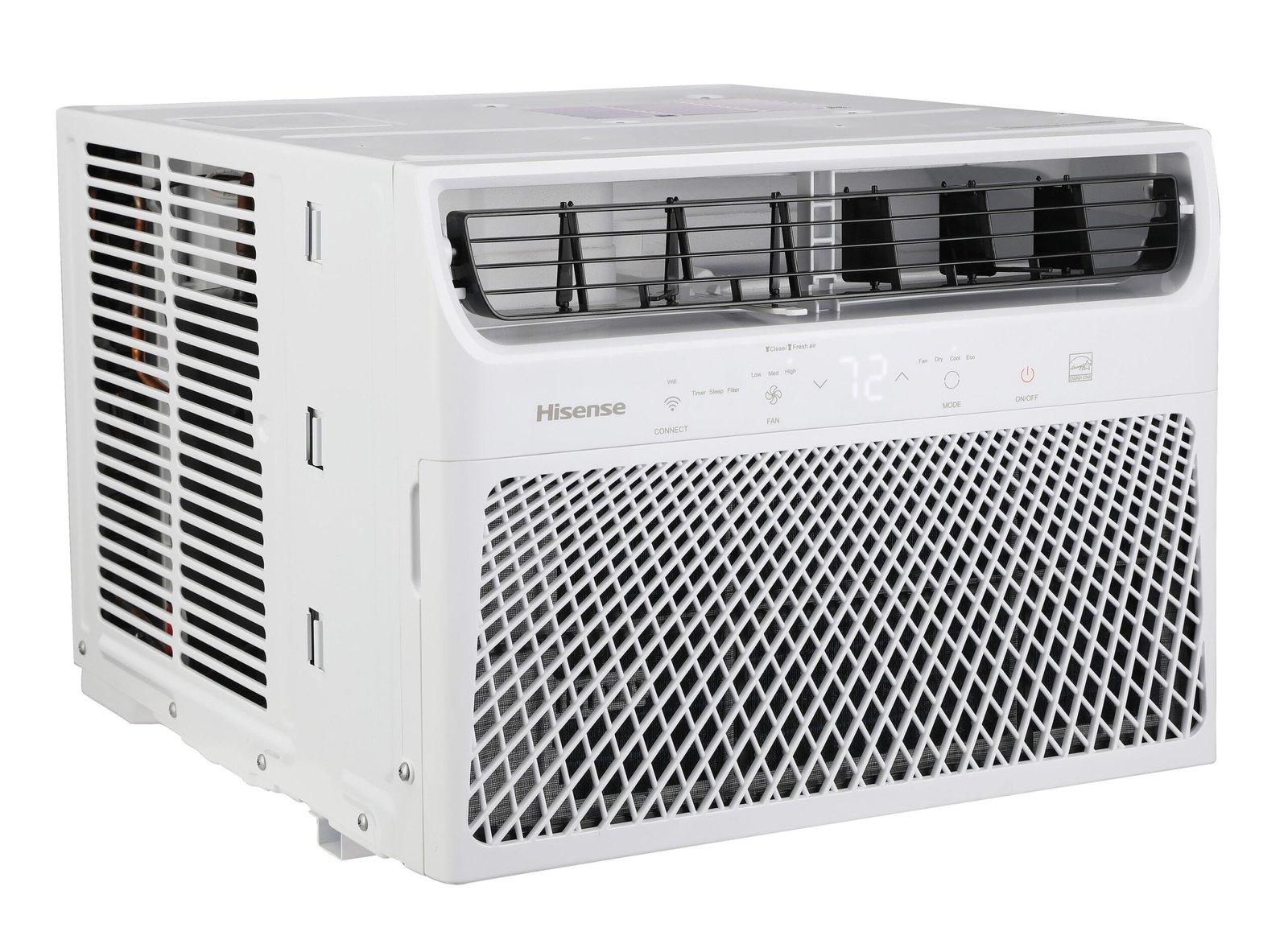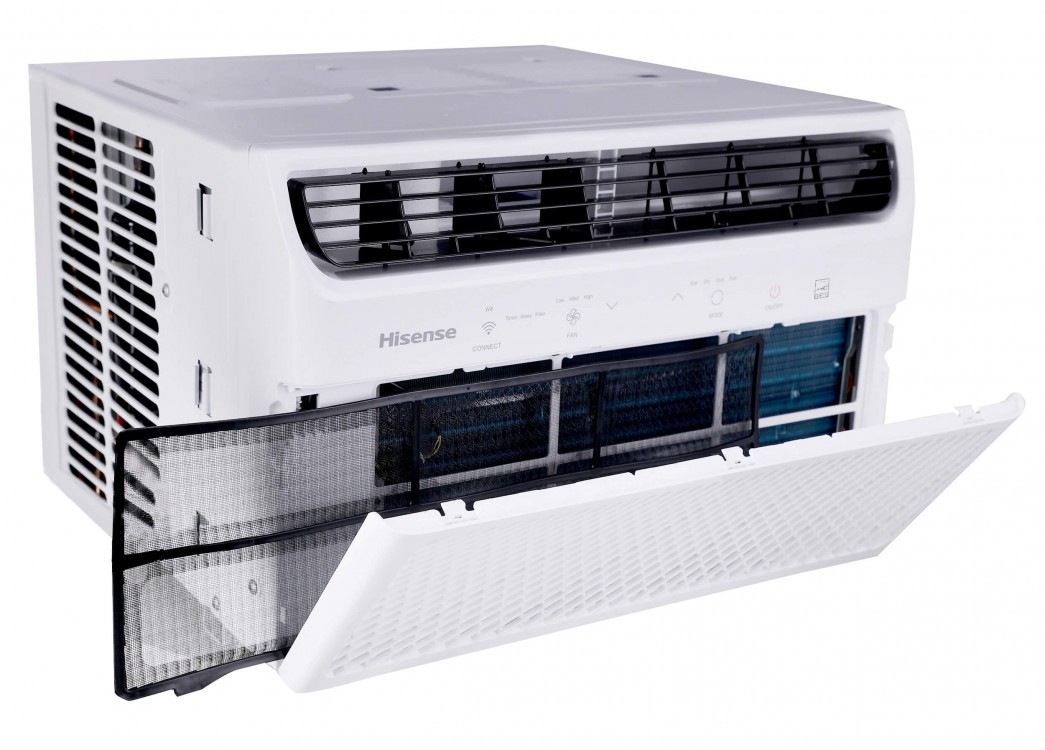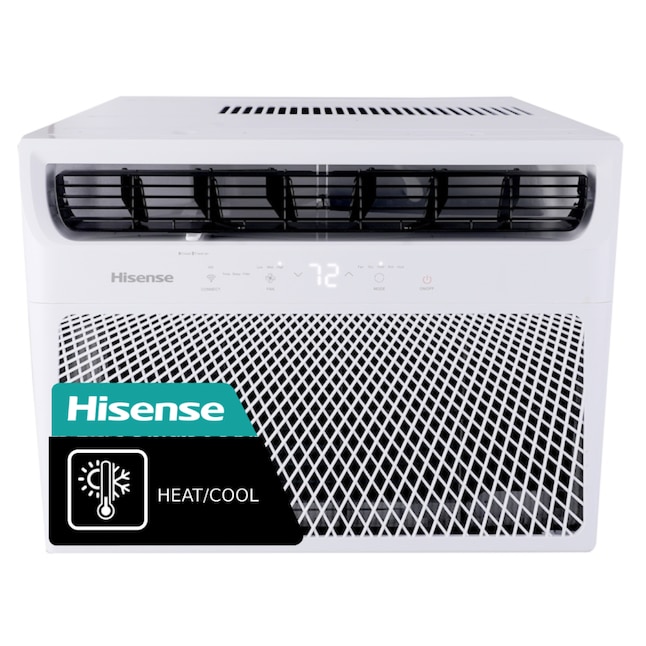
Common troubleshooting steps for a Hisense window air conditioner include checking for power supply issues and cleaning the air filter. If your Hisense window air conditioner is not turning on or is not cooling properly, start by ensuring that it is receiving power and that the power outlet is working.
Additionally, regularly cleaning or replacing the air filter can help improve the efficiency of the air conditioner. Keeping these troubleshooting steps in mind can help resolve common issues with a Hisense window air conditioner.

Credit: www.hisense-usa.com
Common Issues With Hisense Window Air Conditioners
Hisense window air conditioners are a popular choice for keeping your space cool and comfortable during the hot summer months. However, like any other appliance, they may encounter some common issues that can affect their performance. In this article, we will explore three common issues you may encounter with your Hisense window air conditioner and provide troubleshooting tips to help you resolve them.
Unit Not Turning On
One of the most frustrating issues you may face with your Hisense window air conditioner is when it simply won’t turn on. If you are experiencing this problem, there are a few potential causes to consider:
- Make sure the unit is properly plugged into a functioning power outlet. Check the power cord for any damages or loose connections.
- Ensure that the power supply to the unit has not been interrupted. Check the circuit breaker or fuse box to make sure there are no tripped switches or blown fuses.
- Verify that the remote control or control panel is functioning correctly. Replace the batteries in the remote control if necessary or check for any error codes on the control panel.
If none of these steps resolve the issue, it may be best to contact a professional technician for further assistance.
Insufficient Cooling
If your Hisense window air conditioner is running but not cooling your space adequately, there are a few troubleshooting tips you can try:
- Check if the air filter is clean and free from dust and debris. A clogged air filter can restrict airflow and reduce cooling efficiency. Remove the filter and clean or replace it as needed.
- Ensure that the unit is set to the correct cooling mode and temperature settings. Adjust the temperature and fan speed according to your comfort preferences.
- Inspect the unit’s vents and ensure they are not blocked by furniture, curtains, or any other obstructions. Unrestricted airflow is essential for optimal cooling performance.
- Consider the size of the room and the cooling capacity of the air conditioner. If the unit is undersized for the space, it may struggle to cool effectively. In such cases, you may need to consider installing a unit with a higher BTU rating.
By following these troubleshooting tips, you can improve the cooling efficiency of your Hisense window air conditioner and enjoy a more comfortable environment.
Excessive Noise
If your Hisense window air conditioner is making excessive noise, it can disrupt your peace and tranquility. Here are a few steps to address this issue:
- Check if there are any loose parts or screws on the unit. Tighten any loose components that may be causing vibrations or rattling noises.
- Inspect the fan blades for any obstructions, such as debris or dust buildup. Clean the fan blades carefully or remove any foreign objects to restore smooth operation.
- Ensure that the unit is installed securely in the window frame. Loose installation can lead to increased vibrations and noise. Reinstall or adjust the unit if necessary.
If the noise persists even after following these troubleshooting steps, it is advisable to contact a professional technician for further inspection and repair.
Troubleshooting Tips For Hisense Window Air Conditioners
If you own a Hisense window air conditioner and are experiencing issues with its performance, don’t worry! In this article, we will provide you with some troubleshooting tips to help you get your unit back to optimal functioning. By following these simple steps, you may be able to identify and resolve the problem without the need for professional assistance.
Check Power Supply
One of the first things you should do when your Hisense window air conditioner is not working properly is to check the power supply. Follow these steps:
- Ensure that the unit is properly plugged into a functional power outlet. If it is, you can try plugging another device into the outlet to see if it works. This will help you determine if the issue lies with the outlet or the air conditioner itself.
- If the outlet is working fine, check if the circuit breaker or fuse connected to the air conditioner is tripped or blown. If so, reset the breaker or replace the blown fuse.
- Inspect the power cord for any visible damage. If you notice any frayed wires or cuts, it may be necessary to replace the cord.
- Press the power button on the control panel of the unit to ensure it is turned on.
Clean Or Replace Air Filters
Dirty or clogged air filters can significantly impact the performance of your Hisense window air conditioner. Follow these steps to clean or replace the filters:
- Locate the air filters, which are usually positioned behind a removable panel on the unit.
- Remove the panel and take out the filters.
- If the filters are reusable, gently clean them by rinsing under running water or using a soft brush. Allow them to dry completely before reinserting them back into the unit.
- If the filters are not reusable or heavily damaged, they may need to be replaced. Consult the user manual or contact Hisense customer support for guidance on finding the appropriate replacement filters.
- Always remember to clean or replace the filters regularly, ideally every few weeks, to ensure proper airflow and efficient cooling.
Verify Thermostat Settings
Incorrect thermostat settings can lead to temperature inconsistencies and poor cooling performance. Here’s how you can check and adjust the thermostat settings on your Hisense window air conditioner:
- Ensure that the thermostat is set to the desired temperature and cooling mode.
- If you suspect the thermostat may be faulty, you can use a separate thermometer to measure the air temperature near the unit. Compare this reading with the temperature displayed on the air conditioner’s control panel. If there is a significant difference, it may indicate a thermostat malfunction.
- Follow the instructions in the user manual to recalibrate or reset the thermostat if necessary.
Inspect And Clean The Condenser Coils
The condenser coils, located on the back or side of the air conditioner, play a crucial role in heat exchange. Continuous use can accumulate dirt and debris on these coils, leading to reduced cooling efficiency. Here’s how you can clean them:
- Before cleaning the condenser coils, disconnect the power supply to the unit to avoid any electrical accidents.
- Using a soft brush or a vacuum cleaner with a brush attachment, gently remove the accumulated dirt and debris from the coils.
- Take caution not to bend or damage the delicate fins on the coils.
- If necessary, you can also use a coil cleaner spray specifically designed for air conditioners. Follow the instructions provided by the manufacturer for safe and effective use.
- Once the coils are clean, reassemble any removed panels and restore power to the unit.
Ensure Proper Airflow
Restricted airflow can hinder the cooling efficiency of your Hisense window air conditioner. Follow these steps to ensure proper airflow:
- Remove any obstructions such as furniture, curtains, or plants blocking the air conditioner’s intake or output vents.
- Keep the area around the unit clean and free from dust and debris.
- If necessary, adjust the louvers on the unit to direct the airflow appropriately.
By following these troubleshooting tips, you can resolve common issues with your Hisense window air conditioner and enjoy comfortable cooling once again. If the problem persists or you require further assistance, it is recommended to contact Hisense customer support or a qualified technician for professional help.
When To Seek Professional Help
While many common issues with Hisense window air conditioners can be troubleshooted and resolved by following simple steps, there are times when it is necessary to seek professional help. Identifying these situations will save you time, money, and potentially prevent further damage to your air conditioner.
1. Persistent Issues
If you have tried troubleshooting your Hisense window air conditioner using the manufacturer’s manual and online resources, but the problem persists, it is advisable to seek the assistance of a professional technician. Often, persistent issues indicate a deeper underlying problem that requires expert knowledge and experience to correctly diagnose and fix.
2. Electrical Problems
Electrical problems can be hazardous and should be addressed by a licensed professional. If you notice any unusual behavior such as tripped circuit breakers, sparks, burning smells, or any other electrical issues with your Hisense window air conditioner, do not attempt to fix it yourself. Contacting a professional electrician or air conditioning technician will ensure that proper safety measures are taken and prevent the risk of harm.
3. Refrigerant Leaks
Refrigerant leaks can significantly affect the cooling efficiency and overall performance of your Hisense window air conditioner. If you suspect a refrigerant leak, it is crucial to consult a professional technician. They have the necessary equipment and expertise to identify and repair the leak, as well as recharge the unit with the correct amount of refrigerant if required. Attempting to fix a refrigerant leak without proper knowledge can further damage your air conditioner and may void the warranty.
Remember, while troubleshooting minor issues on your own can be cost-effective, some problems require the expertise and experience of a trained technician. Seeking professional help for persistent issues, electrical problems, and refrigerant leaks ensures the safety and longevity of your Hisense window air conditioner.

Credit: www.pcmag.com

Credit: www.lowes.com
Frequently Asked Questions For Hisense Window Air Conditioner Troubleshooting
What Are The Common Issues With Hisense Window Air Conditioners?
Some common issues with Hisense window air conditioners include inadequate cooling, strange noises, and a malfunctioning display panel.
Why Is My Hisense Window Air Conditioner Not Cooling Well?
There are several reasons why your Hisense window air conditioner may not be cooling well, such as a dirty air filter, low refrigerant levels, or a faulty compressor. Cleaning or replacing the air filter and checking the refrigerant levels can often solve the problem.
How Can I Fix The Strange Noises Coming From My Hisense Window Air Conditioner?
If you are experiencing strange noises coming from your Hisense window air conditioner, it could be due to a loose fan, a worn-out motor, or debris in the unit. Try tightening any loose components, lubricating the motor, or removing any debris to see if the noise resolves.
If not, contact a professional for assistance.
Conclusion
To troubleshoot issues with your Hisense window air conditioner, it is crucial to understand the common problems and their solutions. By following the troubleshooting steps mentioned in this blog post, you can address issues like poor cooling, strange noises, or malfunctioning controls.
Remember to regularly clean and maintain your air conditioner to prevent future problems. With these simple tips, you can ensure the optimal performance of your Hisense window air conditioner and enjoy a cool and comfortable environment year-round.






